WMG News
The UK’s Modern Slavery Act isn’t enough to tackle modern slavery
Currently there are 24 million victims of modern day slavery or forced labour around the world, with a significant amount working on project-related activities.
In a report for Association for Project Management, WMG academic Professor Naomi Brookes from the University of Warwick has worked with the University of Leeds, and University College London to identify ways to prevent modern day slavery in projects.
The key drivers of modern day slavery are:
§ Globalisation
§ Supply chain complexity
§ Informal employment practices
§ Government ambivalence
Researchers have identified several ways that can tackle modern day slavery, from organisations, public and Government.
At an organisational level there are a range of structural solutions that could inhibit modern slavery, including developing a clear policy on forced labour and slavery; training auditors and compliance officers; establishing measures to monitor suppliers and subcontractors and extending monitoring to contract agencies.
However the public can also help from home, by increasing pressure for visibility within supply chains. If supply chains are forced to show their sources and more companies apply for fair trade certification they will eliminate slavery.
The Government can also apply new legislation, although the UK’s Modern Slavery Act exists, in 2019 a panel of parliamentarians found that there was confusion over which companies are covered by the legislation, and condemned the level of reporting of supply chain transparency as inadequate.
They also found poor compliance and identified a major weakness in the legislation, since large sections of the economy, including public bodies, were exempt from the requirement to report on their own supply chain. Therefore new legislation that all must report on their supply chains could be another route forward to eliminating modern day slavery.
Another, and perhaps more effective route given the complexity of eliminating modern slavery given the difficulties at organisational and legislative levels, is multi-stake holder initiatives (MSIs), which consist of global institutions involving corporations and civil society organisations that ‘fill the gap’, providing governance solutions for ethical issues where national legislation and other initiatives have failed.
 Professor Naomi Brookes, from WMG, University of Warwick comments:
Professor Naomi Brookes, from WMG, University of Warwick comments:
“MSIs can privately regulate by meeting the basic requirements of credibility and effectiveness. If we could compare the legitimacy of several MSIs it would give us a better understanding of the criticism levelled at certain MSIs by NGOs, as well as areas that could be improved.”
Although MSIs may seem the most efficient way to tackle modern day slavery, when it comes to projects, which tend to be short-term, project management practices must be changed.
The researchers questioned many individuals from professional membership organisations, project practitioners, NGOs and academic researchers and independent experts to answer a questionnaire, which covered their individual and organisational experiences of modern day slavery.
There was then an event, where the experts were split into groups and had to answer two questions:
1. What can project professionalism do to eliminate modern slavery from projects?
2. What can professional membership organisations do to assist project professionals in eliminating modern slavery from projects?
Professor Naomi Brookes, adds:
“In reaction to the survey and event we found the best way to eliminate modern slavery was to have MSIs, it was striking to note the similarity between the participants views of professional membership organisations and functionality of MSIs in developing codes of conducts, providing learning standards as well as processes, standards and policies, issuing labels and certificates as a stimulation of legislation and developing mechanisms for auditing and compliance trans-organisationally.”
Daniel Nicholls, APM research manager, says: “This topical research is key in helping to raise awareness of modern slavery across the wider project profession. It highlights how projects are particularly susceptible, providing guidance and support for project professionals and organisations.”
In order to eliminate modern slavery in projects, further investigation of professional membership organisations acting as MSIs would be use key to identifying mechanisms of modern slavery.
ENDS
15 DECEMBER 2020
NOTES TO EDITORS
Report available to view at: https://www.apm.org.uk/resources/research/research-fund/eliminating-modern-slavery-from-projects/
FOR FURTHER INFORMATION PLEASE CONTACT:
Alice Scott
Media Relations Manager – Science
University of Warwick
Tel: +44 (0) 7920 531 221
E-mail: alice.j.scott@warwick.ac.uk
The University of Warwick recognised for excellence in cyber security education
The University of Warwick is one of eight trailblazing universities to have become the first in the UK to gain recognition for their commitment to cyber security education in a new initiative from the National Cyber Security Centre (NCSC) – a part of GCHQ.
Pioneering institutions in the UK have been recognised as the country’s first Academic Centres of Excellence in Cyber Security Education (ACEs-CSE) for delivering first-rate cyber security education on campus and promoting cyber skills in their community.
The ACE-CSE programme, led by the NCSC – a part of GCHQ – and the Department for Digital, Culture, Media and Sport, has recognised eight universities with gold and silver awards – with the next round of applications opening early next year.
 Professor Tim Watson from WMG, University of Warwick comments:
Professor Tim Watson from WMG, University of Warwick comments:
"We are delighted to be recognised by the National Cyber Security Centre as an academic centre of excellence and to have been awarded a Gold Award for our cyber security education."
Chris Ensor, NCSC Deputy Director for Cyber Growth, said:
“I am delighted we can now recognise the first tranche of universities as Academic Centres of Excellence in Cyber Security Education, complementing our existing programmes which recognise high quality cyber security research and degree courses.”
“It is a testament to the continual efforts of academics, support staff and senior management that cyber security remains high on their agenda.
“We very much look forward to working with them over the coming years and strongly encourage other universities to work towards achieving similar recognition in the future.”
Seven universities received Gold awards in this first round of applications for demonstrating impressive approaches to promoting cyber security excellence. They are:
· Abertay University
· Lancaster University
· University of Southampton
· University of South Wales
· University of Surrey
· University of Warwick
· University of the West of England
Each of the successful Gold centres demonstrated they offer at least one NCSC-certified degree, deliver top cyber security training to staff and students from other specialisms within the university, work to improve the institution’s cyber resilience and carry out local outreach activities.
Digital Infrastructure Minister Matt Warman said:
“The UK has some of the brightest minds in the world working in tech and it's right we celebrate universities where so many people develop relevant and cutting-edge skills.
"We continue to work closely with academia to nurture the next generation of cyber security talent and I urge interested education institutions to apply for this recognition.”
Offering a NCSC-certified degree is necessary for receiving ACE-CSE recognition, as it demonstrates that an institution is already providing a high standard of education to students enrolled in cyber security disciplines.
However, successful ACE-CSE institutions go beyond this, offering cyber security education opportunities across the whole campus and to those in their wider community.
In the first tranche of award winners this included giving cyber security classes to those studying subjects such as Politics, Law, and Psychology and setting up work experience placements for local schoolchildren.
The next round of applications for ACE-CSE recognition will open in early 2021 to higher education institutions in the UK. More information about the initiative can be found on the NCSC website.
ENDS
15 DECEMBER 2020
NOTES TO EDITORS
The ACE-CSE programme plays an importance part in the NCSC’s ambition to create a regional cyber security eco-system which nurtures cyber security talent in local communities. In September, the NCSC announced 13 secondary schools in Gloucestershire and Wales had achieved CyberFirst Schools status for their excellence in cyber security education.
On the NCSC
§ The UK government is fully committed to defending against cyber threats and set up the National Cyber Security Centre (NCSC) as part of GCHQ.
§ The NCSC was created as part of the five-year National Cyber Security Strategy in 2016, supported through £1.9 billion transformative investment
§ The NCSC is the UK’s lead technical authority on cyber security and offers unrivalled real-time threat analysis, defence against national cyber attacks and tailored advice to victims when incidents do happen
§ If you have any additional questions, please contact pressoffice@ncsc.gov.uk.
FOR FURTHER INFORMATION PLEASE CONTACT:
Alice Scott
Media Relations Manager – Science
University of Warwick
Tel: +44 (0) 7920 531 221
E-mail: alice.j.scott@warwick.ac.uk
Fellowship funding for WMG researcher
 WMG Research Fellow, Dr David Fengwei Xie has been awarded a prestigious five-year EPSRC Early Career Fellowship.
WMG Research Fellow, Dr David Fengwei Xie has been awarded a prestigious five-year EPSRC Early Career Fellowship.
Based in the International Institute for Nanocomposites Manufacturing (IINM), Dr Fengwei Xie has been working on sustainable polymer materials and composites for tackling the current issues around petro-derived plastics, recycling, and single-use plastics. His fellowship will allow him to further explore in this highly important area and to develop functional, biopolymer-based composite materials with tailored structures and properties for demanding applications.
The fellowship will provide his projects with sufficient funding and a dedicated team that will engage with the public, industry and policymakers.
An EPSRC Fellowship is designed to provide the recipient with the necessary support to establish or further develop themselves as a leader of the future. The award enables the recipient to devote their time to delivering their proposed research vision.
Dr Fengwei Xie explained: “The support provided by the EPSRC will allow me to develop my technical and transferrable skills to the greatest extent, become an independent and leading academic in advanced biopolymer materials engineering, and establish and grow my own group – fulfilling my career ambition.
“I am extremely excited to be awarded this fellowship as it will allow me to continue working on ‘green’ polymer composites for people’s welfare and a sustainable future.”
Read more about WMG’s Nanocomposites research here.
High-rate Li-ion batteries demonstrate superior safety
As the inevitable growth of transport electrification continues, the types of batteries that will be used in such vehicles, their charging parameters, infrastructure and timeframes are key considerations that will speed up the transition to electrification.
In the paper, ‘Determining the Limits and Effects of High-Rate Cycling on Lithium Iron Phosphate Cylindrical Cells’ published in and on the cover of the Journal Batteries, researchers from WMG, University of Warwick investigated the impacts on battery cell ageing from high current operation using commercial cells.
They used two tests to establish the maximum current limits before cell failure and applied this maximum current until cell failure. Testing was performed to determine how far cycling parameters could progress beyond the manufacturer’s recommendations.
During testing, current fluxes were increased up to 100 C cycling conditions. Charge and discharge current capabilities were possible at magnitudes of 1.38 and 4.4 times, respectively, more than that specified by the manufacturers’ claims. This increased current was applied for 500 charge-discharge.
However, the application of these currents resulted in a rapid decrease in capacity in the first 60 cycles as well as an increase in resistance. Furthermore, the application of such currents resulted in the increase of cell temperature, during both charge and discharge with natural convection during the rest step cooling the cell. Batteries operate in an optimum temperature range, and any deviations outside this can cause components and chemicals to start decomposing inside them.
They also identified deformation of the “jelly roll” (coiled electrodes and separator) with formation of lithium plating from testing and ageing. These deformations emanate from the centre of the cell in an axial direction towards the outside of the cell, suggesting the core of the cell was the hottest.
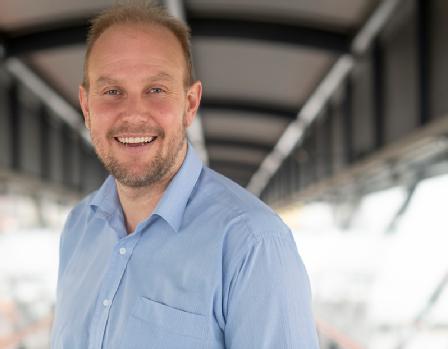 Lead Engineer, Justin Holloway, from WMG, University of Warwick comments:
Lead Engineer, Justin Holloway, from WMG, University of Warwick comments:
“The testing showed there is a window for operating batteries above manufacturer stated current limits, however, whilst maintaining manufacturer stated voltage limits. We need to ensure that batteries operate in as the safest manner possible, and for an appropriate practical lifetime, which is why the manufacturers have these limits.
“We also identified thermal fatigue as the driving mechanism for jelly roll deformation. With each cycle of charge and discharge, the cell experienced thermal stresses causing deformation of its components. These deformations grew progressively with cycle number, while the jelly roll was constrained mechanically by the rigid outer can and centre pin.
“If convection cooling could be applied to the centre of the cell where the cell was the hottest, these deformations could be mitigated and controlled, allowing the cell to maintain capacity and resistance criteria for longer.”
The researchers would like to thank all involved in this work, including WMG’s High Value Manufacturing Catapult and The Faraday Institution. WMG’s Battery Forensic Group, led by Dr Mel Loveridge is keen to engage with industry and academia alike to grow advances in understanding new materials, battery performance and degradation modes.
ENDS
14 DECEMBER 2020
NOTES TO EDITORS
High-res images available at:
https://warwick.ac.uk/services/communications/medialibrary/images/december_2020/justin_holloway.jpg
Caption: Justin Holloway, from WMG, University of Warwick
Credit: WMG, University of Warwick
Paper available to view at: https://www.mdpi.com/2313-0105/6/4/57/pdf
For further information please contact:
Alice Scott
Media Relations Manager – Science
University of Warwick
Tel: +44 (0) 7920 531 221
E-mail: alice.j.scott@warwick.ac.uk
Battery ageing model developed by WMG to support all-electric vehicles
- The issue of how long a battery pack will remain in useful operation, to guarantee a warranty for an electric vehicle battery, is a challenge faced by most car manufacturers, as they haven’t been around long enough for them to know their full lifetime
- Working as part of an APC6 funded project, WMG at the University of Warwick developed a battery model capable of forecasting the battery health for realistic usage cases
- Researchers at WMG experimentally tested the batteries for several usage cases and the model predicted the evolution of battery health with 98% accuracy
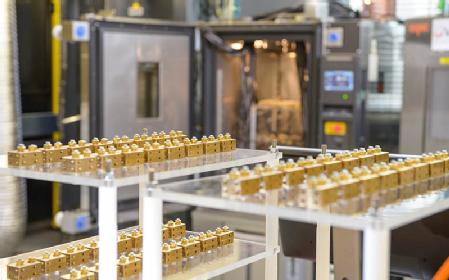
Extensive research, carried out by researchers from WMG, University of Warwick included characterisation, performance, safety and degradation testing of an EV battery, with degradation being the key focus to understand the impact on battery pack warranty.
To predict the degradation of the battery capacity researchers had to build a complex battery model, incorporating the key physics that causes batteries to age. The model was capable to predict scenarios under which a battery health will gradually fade and fulfil the warranty requirements and scenarios where the battery health will suddenly decrease after a certain usage duration.
Knowing when a battery’s health, can suddenly decrease, known as the ‘knee-point’ effect is a hotly studied problem among lithium-ion battery researchers. Researchers found that, for the particular battery investigated, by avoiding deep discharges and reducing the number of fast-charging a week, enabled the battery to perform and last the expected lifetime of the battery pack.
The aged cells were subsequently disassembled and examined for failure evidences. Fully discharging the battery at different rates demonstrated a thin film to deposit on the electrode and deform the electrode causing the active material in the batteries to delaminate. These effects can bring about a sudden reduction in the battery health.
Dr Dhammika Widanalage, from WMG, University of Warwick comments:
“We worked with the project partners to understand the needs of the battery ageing model and the usage scenarios. Using the data from our laboratories, we were then able to calibrate our model and also predict the voltage response and capacity fade of the battery under new usage cases with a very high accuracy of around 98%.”
WMG supports key Midlands Manufacturing report
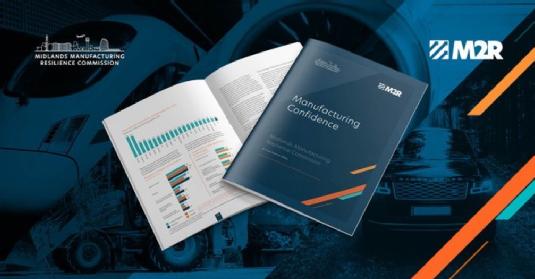 WMG Centre HVM Catapult was pleased to contribute a chapter to the recent Midlands Manufacturing Resilience Commission (M2R) report: Manufacturing Confidence.
WMG Centre HVM Catapult was pleased to contribute a chapter to the recent Midlands Manufacturing Resilience Commission (M2R) report: Manufacturing Confidence.
Led by M2R Chairman, Dr Clive Hickman, the Commission gathered evidence from a series of roundtables, surveys and contributions from some 200 participants from industry, academia and Government, including WMG’s Professor of Operations and Supply Chain Strategy, Jan Godsell.
The various discussions centred around key issues impacting Midlands’ manufacturing including skills, productivity, supply chains, leadership, innovation and finance, plus the region’s identity and reputation now and in the future.
This work culminated in “Manufacturing Confidence,” which shares the findings of those discussions, supported by a series of independently authored chapters focusing on key themes.
CEO WMG centre HVM Catapult and Director of Industrial Engagement, Professor David Greenwood authored the Manufacturing Business Support section of the report. This chapter considered the specific needs of Midlands Manufacturers, with one of the recommendations being the provision of a ‘one-stop-shop’ for business support focusing on sustainability, innovation and skills development.
An official launch event took place, virtually, on 2nd December, with presentations from Andy Street, Mayor of the West Midlands; Nadhim Zahawi MP and Hannah Boardman, Director, Advanced Manufacturing, BEIS.
Download the report here.
WMG's Professor David Greenwood responds to the Government’s new climate target plan that was announced today
 Professor Greenwood, CEO WMG centre HVM Catapult and Director of Industrial Engagement, comments:
Professor Greenwood, CEO WMG centre HVM Catapult and Director of Industrial Engagement, comments:
"Today’s announcement, alongside the previously announced Ten Point Plan for a green industrial revolution, shows that the UK intends to take a leading role in decarbonisation, and to reinvigorate our economy in doing so. Delivering this will not be easy, but this clear and consistent policy is an essential first step.
“The decarbonisation of the transport sector will be a major contributor to delivering on this challenge. The current generation of EV technology performs well in passenger cars but remains too expensive for many people, and the cost of the battery is the biggest factor in this. To reduce costs, two things must happen – significant investment in fast charging infrastructure, meaning that battery sizes can be reduced, and sustained investment in R&D into the technology of batteries and their manufacturing processes.
“Beyond passenger cars there are great opportunities for the UK in micro-mobility (e-bikes, scooters, motorcycles and small vehicles), low carbon freight, rail, maritime and aviation. To ensure sustainability of the products we roll out today, we must also be investing in the technologies of recycling and re-use of their component parts – and these too will present industrial opportunities for the UK to secure material supply chains and minimise environmental impact.
“To ensure our innovation investment benefits Britain’s economy, we need a clear action plan to expand and strengthen our transport supply chain. This includes supporting skills and retraining, widening access to finance, improving the industrialisation of innovation and attracting manufacturing investment to the UK.
"Investment in the industries and people striving to make transport zero carbon is the only way that we will achieve a green transport future that is convenient for its users and achieves long term sustainability."
Robot hands one step closer to human thanks to WMG AI algorithms
· The Shadow Robot Dexterous Hand is comparable to a human hand, reproducing all of its degrees of freedom
· While dexterous manipulation of objects is a fundamental everyday task for humans, it is still very challenging for autonomous robotic hands to master
· Researchers at WMG, University of Warwick, have developed novel artificial intelligence algorithms so the robot can learn how to manipulate objects just like humans do
· In simulated environments, the robotic hands learn on their own how to coordinate movements and execute tasks like throwing a ball to each other and spinning a pen
 The Shadow Robot Dexterous Hand is a robot hand, with size, shape and movement capabilities similar to those of a human hand. To give the robotic hand the ability to learn how to manipulate objects researchers from WMG, University of Warwick, have developed new AI algorithms.
The Shadow Robot Dexterous Hand is a robot hand, with size, shape and movement capabilities similar to those of a human hand. To give the robotic hand the ability to learn how to manipulate objects researchers from WMG, University of Warwick, have developed new AI algorithms.
Robot hands can be used in many applications, such as manufacturing, surgery and dangerous activities like nuclear decommissioning. For instance, robotic hands can be very useful in computer assembly where assembling microchips requires a level of precision that only human hands can currently achieve. Thanks to the utilization of robot hands in assembly lines, higher productivity may be achieved whilst securing reduced exposure from work risk situations to human workers.
In the paper, ‘Solving Challenging Dexterous Manipulation Tasks With Trajectory Optimisation and Reinforcement Learning’, researchers Professor Giovanni Montana and Dr Henry Charlesworth from WMG, University of Warwick have developed new AI algorithms – or the “brain” - required to learn how to coordinate the fingers’ movements and enable manipulation.
Using physically realistic simulations of Shadow’s robotic hand, the researchers have been able to make two hands pass and throw objects to each other, as well as spin a pen between its fingers. The algorithms however are not limited to these tasks but can learn any task as long as it can be simulated. The 3D simulations were developed using MuJoCo (Multi-Joint Dynamics with Contact), a physics engine from the University of Washington.
The researchers’ approach uses two algorithms. Initially, a planning algorithm produces a few approximate examples of how the hand should be performing a particular task. These examples are then used by a reinforcement learning algorithm that masters the manipulation skills on its own. By taking this approach, the researchers have been able to produce significantly better performance compared to existing methodologies. The simulation environments have been made publicly available for any researcher to use.
Now that the algorithms have been successful in the simulations, Professor Montana’s team will continue to work closely with Shadow Robot and test the AI methodology on real robotic hardware, which could see the hand advance one step closer to use in the real day to day life. In a second paper, ‘PlanGAN: Model-based Planning With Sparse Rewards and Multiple Goals’, to be presented at the 2021 NeurIPS conference, the WMG researchers have also developed a novel and general AI approach that enables robots to learn tasks such as reaching and moving objects, which will further improve hand manipulation applications.
Professor Giovanni Montana, from WMG, University of Warwick comments: “The future of digitalisation relies on AI algorithms that can learn autonomously, and to be 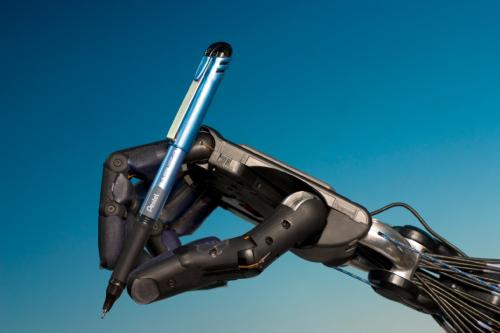 able to develop algorithms that give Shadow Robot’s hand the ability to operate like a real one is without any human input is an exciting step forward. These autonomous hands could be used in the future to deliver robotic surgeons, to increase the productivity of assembly lines and to replace humans in dangerous jobs such as bomb disposal.”
able to develop algorithms that give Shadow Robot’s hand the ability to operate like a real one is without any human input is an exciting step forward. These autonomous hands could be used in the future to deliver robotic surgeons, to increase the productivity of assembly lines and to replace humans in dangerous jobs such as bomb disposal.”
“In future work we will let the robots perceive the environment as accurately as humans do, not only through computer vision algorithms that can see the world, but through sensors that detect temperature, force and vibrations so the robot can learn what to do when it feels those sensations.”
Rich Walker, Managing Director of the Shadow Robot Company, in London, comments:
“ When we started building dexterous hands, it was because there was no way to get hold of one without building it! 20 years later, we are now seeing researchers like Giovanni deliver the promise of the hardware by creating algorithms clever enough to control the robot hand – soon perhaps we will see super-human performance?”
ENDS
3 DECEMBER 2020
NOTES TO EDITORS
High-res images available at:
https://warwick.ac.uk/services/communications/medialibrary/images/november_2020/holding_pen.jpg
Caption: Shadow Dexterous Hand
Credit: Shadow Robot Company
https://warwick.ac.uk/services/communications/medialibrary/images/november_2020/human_hand_and__handc_crw_9344.jpg
Caption: Shadow Dexterous Hand
Credit: Shadow Robot Company
https://warwick.ac.uk/services/communications/medialibrary/images/november_2020/with_egg.jpg
Caption: Shadow Dexterous Hand
Credit: Shadow Robot Company
Video available at: https://www.youtube.com/watch?v=mUXluGnoDRk
Link to collection of simulation videos: https://dexterous-manipulation.github.io/
Link to papers:
Solving Challenging Dexterous Manipulation Tasks with Trajectory Optimisation and Reinforcement Learning
https://arxiv.org/abs/2009.05104
PlanGAN: Model-based Planning with Sparse Rewards and Multiple Goal
https://arxiv.org/abs/2006.00900
Shadow Robot Company: www.shadowrobot.com / jyoti@shadowrobot.com
For further information please contact:
Alice Scott
Media Relations Manager – Science
University of Warwick
Tel: +44 (0) 7920 531 221
E-mail: alice.j.scott@warwick.ac.uk
WMG partners with Pashley Cycles and a team of UK SMEs to bring a novel e-assisted cargo trike to market
WMG is collaborating with Pashley Cycles and three other SMEs across the Midlands to develop an electrically assisted, last mile delivery trike. The trike features an innovative tilting suspension system which will provide greater stability on corners (and therefore speed and manoeuvrability) than a conventional tricycle configuration of the same size.
Supported and part-funded by the Niche Vehicle Network, through a “Production Readiness” funding call, the Articulating Lightweight Electrically-assisted Cargo Solution (ALECS) project, will form the platform for a new generation of configurable products to meet the rapidly growing market for zero-emission last mile cargo vehicles.
Project Manager, Dr Alex Attridge, explained: “This project provides a fantastic opportunity for WMG to apply its knowledge and expertise in vehicle electrification, and in product testing and evaluation, to a real-world product development process, helping a consortium of UK SMEs bring a new, zero-emission delivery vehicle to a rapidly growing market.”
ALECS is designed to carry cargo on a versatile and customer configurable, multi-functional rear platform. It is particularly suited to parcel and package deliveries in an urban environment where fast and efficient multiple deliveries are the key to success.
The consortium brings together the engineering and simulation capabilities of Simpact Engineering, with the high strength, lightweight tubing expertise of Reynolds Technologies, and the composite panelling and cargo structures expertise of Foresight Innovations. Coupled with Pashley’s heritage and capability in the personal mobility, mobility as a service, and cargo cycles markets, and WMG’s knowledge and experience in progressing innovation through the TRL levels into finish products, the project is set to be completed in April 2021.
One of the seven High Value Manufacturing Catapult centres, WMG brings a number of key technical capabilities to the project. These specifically include the development of photorealistic visualisations (in the form of still renders and interactive digital models) of the concept, and the delivery of digital design review content for both desktop and virtual reality environments. WMG is also responsible for the modelling and optimisation of the production facilities in an immersive, digital environment, utilising large scale laser scanning technology and the latest game engine software. Finally, as the consortium begins the physical testing stage, we will be responsible for the instrumentation of prototype and pre-production vehicles, and the subsequent data acquisition and analysis.
 Managing Director at Pashley Cycles, Adrian Williams added: “Working with WMG has given Pashley the opportunity to take advantage of skills, expertise and facilities which we would never otherwise have had access to. This is really helping us create a robust and reliable, yet lightweight product which we’re confident will give us a competitive advantage in the market.”
Managing Director at Pashley Cycles, Adrian Williams added: “Working with WMG has given Pashley the opportunity to take advantage of skills, expertise and facilities which we would never otherwise have had access to. This is really helping us create a robust and reliable, yet lightweight product which we’re confident will give us a competitive advantage in the market.”
Professor of Data Science awarded a Turing AI Acceleration Fellowship
Giovanni Montana, Professor of Data Science at WMG, has been awarded a Turing AI Acceleration Fellowship.
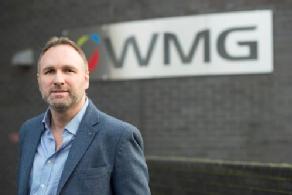
Professor Giovanni Montana’s project, Multi-Agent Deep Reinforcement Learning for Sequential Decision Making in Real-World Applications, aims to make advances in Deep Reinforcement Learning (DRL), an area of machine learning which teaches artificial decision makers such as robots and software agents how to interact with the world in order to achieve a desired goal. By allowing autonomous systems to learn a wide range of skills without human intervention, DRL will allow them to be effective in various applications, such as industrial assembly lines and warehouse management systems, driverless cars and in decision making for the most appropriate form of medical treatment for patients.
Giovanni comments “I am thrilled to have been awarded such a prestigious fellowship that will support an exciting research programme in AI over the next 5 years. The project will aim at developing systems of artificial decision-makers that interact with the real world and autonomously develop collaborative strategies. For instance, in advanced manufacturing, we’ll develop self-coordinating robots in assembly lines that can carry out many different tasks and adapt to changing environments. In digital healthcare, we’ll leverage large volumes of historical NHS data to create an artificial team of specialised clinical experts that can reason under uncertainty and make joint decisions about patient care.”
Science Minister, Amanda Solloway said: “The UK is the birthplace of artificial intelligence and we have a duty to arm the next generation of Alan Turings with the tools that will keep the UK at the forefront of this remarkable technological innovation. The inspirational fellows we are backing today will use AI to tackle some of our greatest challenges head on, transforming how people live, work and communicate, cementing the UK’s status as a world leader in AI and data.”
Digital Minister, Caroline Dineange, said: "The UK is a nation of innovators and this government investment will help our talented academics use cutting-edge technology to improve people's daily lives - from delivering better disease diagnosis to managing our energy needs."
EPSRC Executive Chair Professor Dame Lynn Gladden said: “The Turing AI Acceleration Fellowships will support some of our leading researchers to progress their careers and develop ground-breaking AI technologies with societal impact. By enhancing collaboration between academia and industry and accelerating these transformative technologies these Fellowships will help to maintain and build on the UK’s position as a world leader in AI.”
